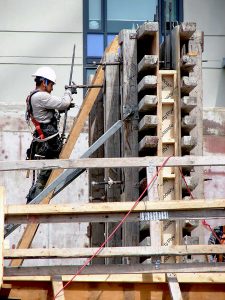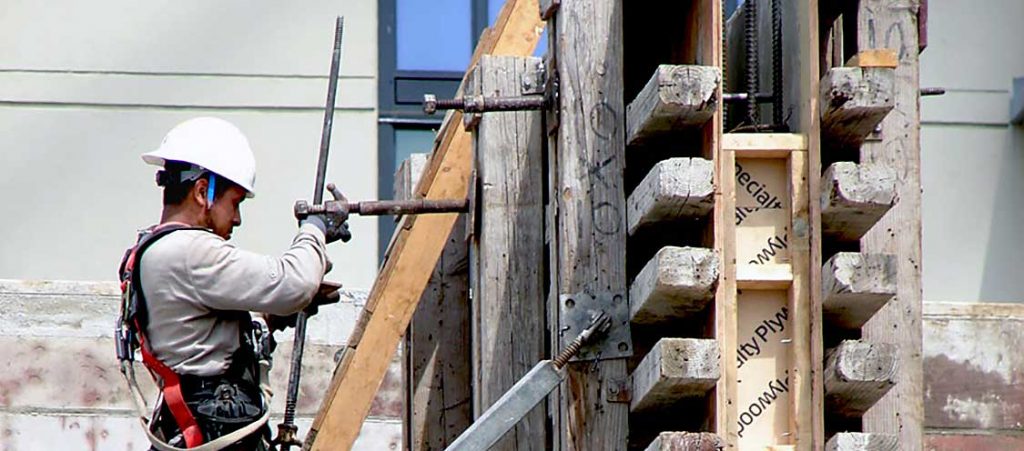How do you prevent deaths and injuries on construction worksites?
The number one way is to use a healthy dose of common sense, said Mike McKenna, executive director of the BC Construction Safety Alliance.
“Workers need to ensure their personal protection equipment is in good order and that they’re using it,” said McKenna. “Employers should put in place a good safety system, such as COR (Certificate of Recognition).”

In addition, said McKenna, the judicious use of data that records the incidence of past injuries and deaths can provide important clues about how to prevent future mishaps.
But what kinds of data are useful?
On the one hand, there is “big data” — voluminous, detailed and complex data sets that have been cross-linked with other data sets.
“Big data acts like an MRI, uncovering patterns that aren’t visible any other way,” said Terry Bogyo.
The B.C.-based independent researcher and safety consultant said big data is a means to an end.
“It doesn’t give you answers, but it shows you where to look,” he said.
Hotspots and relationships in big data sets reveal underlying risks, which can prod workers and their employers to take action.
The way in which data is collected in Canada is “a bit of a patchwork,” said Bogyo.
“Every province has a workers’ compensation board that records work-related injuries and deaths, including in construction,” he said. “Each one publishes data, but the data and the way in which it is classified is unique to the province.”
Each board contributes its data to a national database operated by the Association of Workers’ Compensation Boards of Canada.
“Claims data is used primarily to account for injuries and payments,” said Bogyo.
“But the data can also tell us a lot about what is happening in an industry or occupation.”
For example, are injuries from falls from elevation in residential home construction increasing?
Has fall arrest regulation been effective in reducing fatalities?
Which treatments result in shorter claim durations?
Bogyo said linking together data sets magnifies their power.
“Think about looking across the population of today’s construction workers to see how education or prescription use may influence health and risk of injury,” he said.
Another strategy would be to link populations of construction workers in Canada and Australia to see if injuries and recoveries are the same.
In addition to big data, routine data, its less complex sibling, can be just as helpful in preventing injuries and death, said Chris McLeod, associate professor in the School of Population and Public Health at the University of British Columbia.
“There doesn’t have to be masses of detailed data for it to be useful,” said McLeod. “Lots of data is collected. It just needs to be put into consistent, standardized data bases where it can then be analyzed.”
Routine data has been put to productive use in Ontario, where the Ministry of Labour learned that falls from heights (more than three metres) were the biggest cause of traumatic death in the construction industry.
“Those sorts of deaths are completely preventable,” said Cameron Mustard, president of the Institute for Work and Health in Toronto.
“The Ministry looked at how workers at height were being protected and saw they weren’t sufficient. In 2015, it mandated that any construction worker working at heights had to complete a full day of training and pass a test afterward.”
Since then approximately 400,000 people have taken the course. Pending the collection and analysis of the most recent data, the number of recorded deaths and injuries caused by falls from height is expected to decline.
Mustard said many construction injuries and deaths happen to people who are new to the industry.
“Many of them are also new to Canada,” he said. “We need to collect information on new workers, find out how long they’ve have been in the country and if they are more prone to death and injuries. That sort of routine information is easy to collect.”
Jeff Lyth, principal of QSP Leadership, a Vancouver-based health and safety consulting company, sounds a note of caution on the effectiveness of data bases to prevent workplace deaths and injuries.
“Workers compensation data is good at getting and recording the damage metrics, but not at determining worker performance when the accident took place,” said Lyth. “We need to track task performance and we don’t do that in the current system.”
Lyth said the industry could gather and link incident and performance data.
“That is valuable information and it could help determine accident causality and prevent future accidents from taking place,” he said.











Recent Comments